One of Hollywood's Most Storied Estates Gets a Second Act
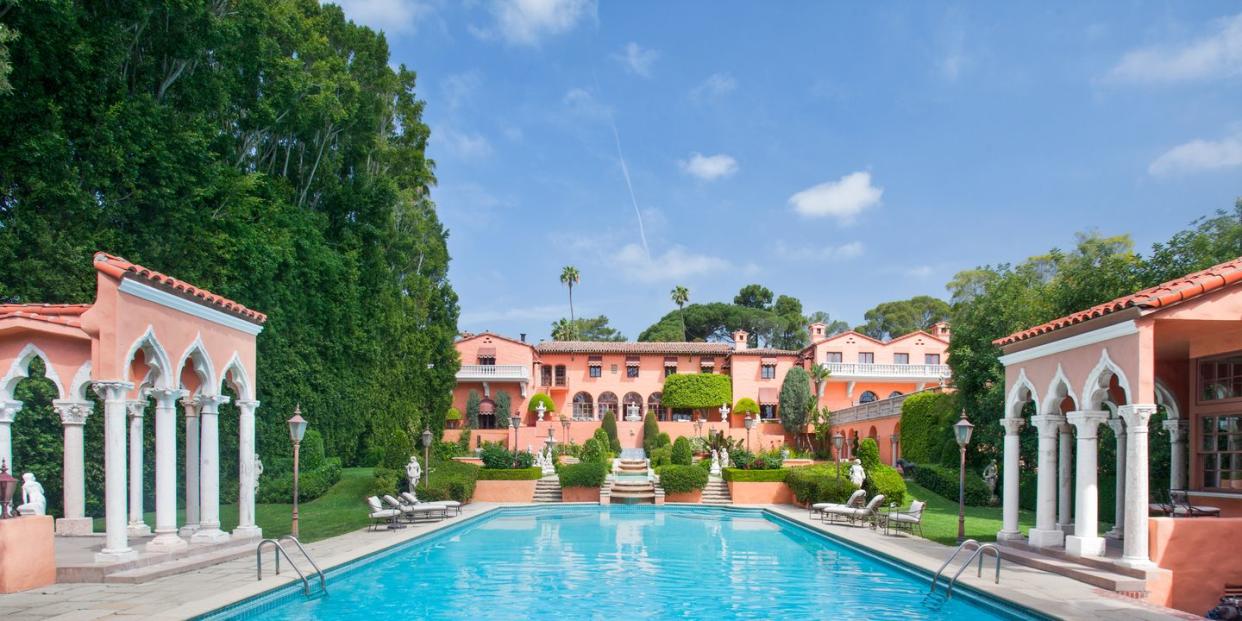
- Oops!Something went wrong.Please try again later.
- Oops!Something went wrong.Please try again later.
- Oops!Something went wrong.Please try again later.
- Oops!Something went wrong.Please try again later.
Beverly Hills is used to seeing its history destroyed. Over the years residents of Southern California’s best-known zip code have become inured to witnessing elegant estates demolished, often to be replaced with boxy megamansions. This appeared to be a one-way trend until several recent buyers of homes built in the 1920s reversed course, showing that it is possible for wealth and taste to work together.
This change in direction is best exemplified by the meticulously planned renovation of the home known as the Beverly Estate (designed by Gordon B. Kaufmann) by the financier and philanthropist Nicolas Berggruen. After having his eyes on the historic residence for some time, Berggruen purchased it in 2021 with that very commitment in mind. “I had first seen the house years ago,” he says, “and when I heard it was available, I wanted to celebrate it and bring it back to life.” He was charmed by its design, its pedigree, the people who had lived there, and those who had visited. “It’s a unique property,” he says now, “so dramatic and theatrical, and also so elegant.”
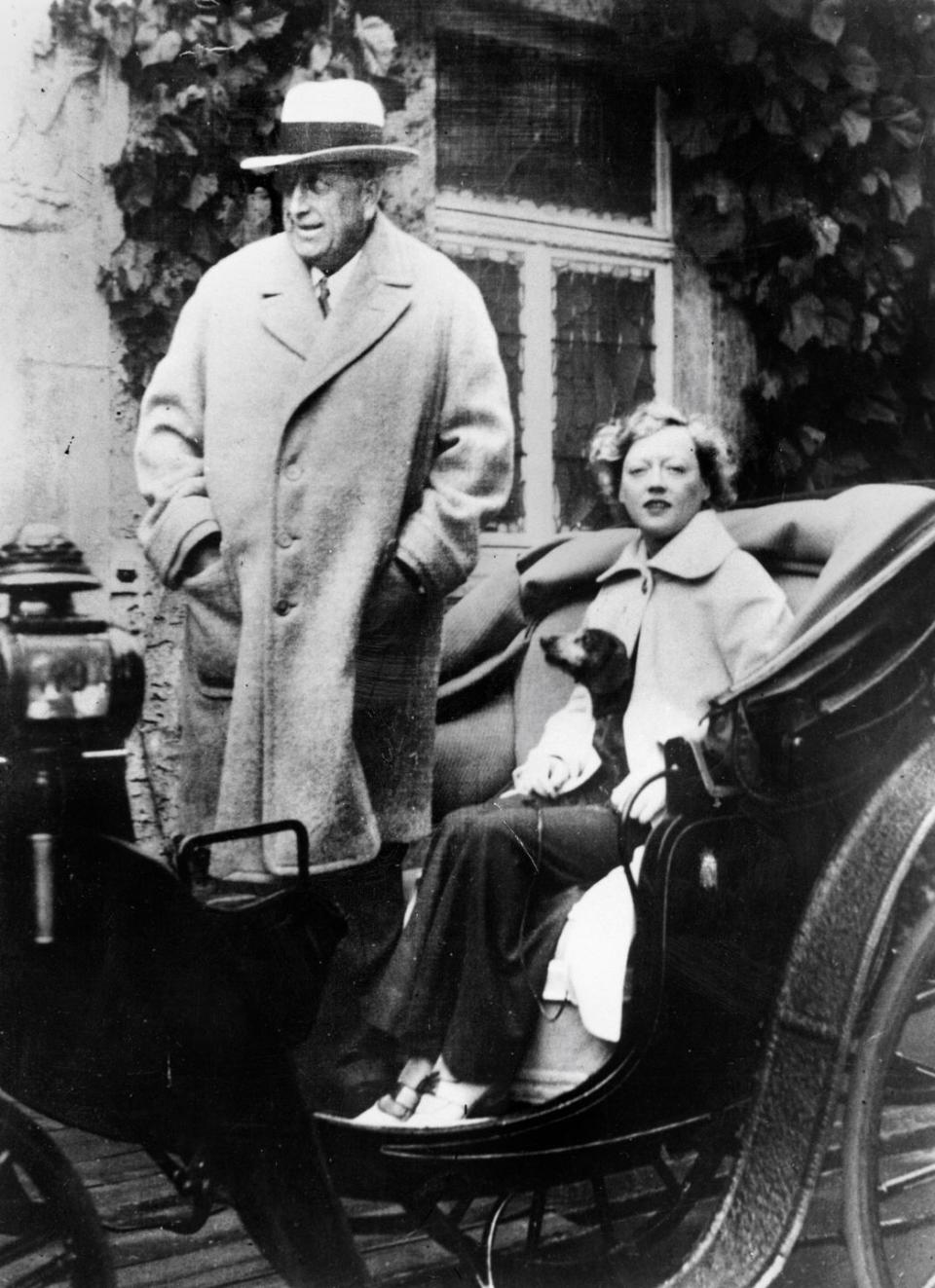
That elegance has always been the point. The estate was built because Milton Getz, a co-founder of Union Bank, bought eight acres behind the Beverly Hills Hotel in 1924 and hired Kaufmann—one of the premier residential architects in Southern California when the film business there was first booming—to design a 20-room home that included a two-story library for the rare books Getz’s wife Estelle collected.
Getz sold the Beverly Estate in 1941, and the property changed hands two more times before the actress Marion Davies bought it for $110,000 in 1946. Davies and her married companion, the publisher William Randolph Hearst, had been together for almost 30 years and spent most of their time at his beloved San Simeon castle. However, Hearst was in his early eighties, and, according to Lara Gabrielle, author of the forthcoming Davies biography Captain of Her Soul, “Marion knew he needed to be closer to his doctors. They enlisted San Simeon architect Julia Morgan to oversee the construction of guestrooms at the gatehouse and brought in European mantelpieces and doorways.” Hearst, who would die in the house in August 1951, also had the fountain in the back yard enlarged into an exquisite swimming pool.
Davies and Hearst weren’t the only ones to enjoy it. Joseph P. Kennedy had been a friend of the couple’s since the late 1920s, when he lived in L.A. and ran film studios. Over the years Kennedy and his son Jack stayed with them at various homes, and Marion and Horace Brown, whom she married after Hearst’s death, attended Jack’s wedding to Jacqueline Bouvier in September 1953. After the nuptials the newlyweds spent several days at the Beverly Estate on their honeymoon.
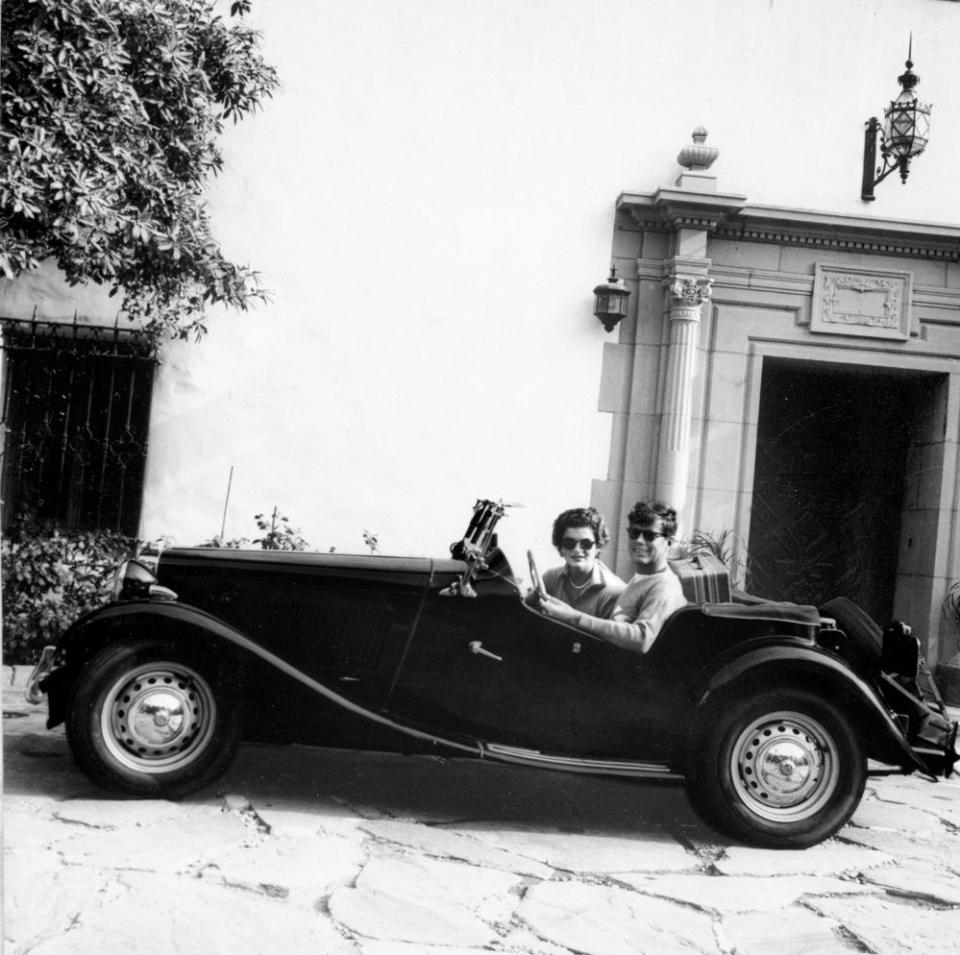
Seven years later the Democratic Convention that nominated Senator John F. Kennedy for president was held in Los Angeles, but Joe Kennedy was persona non grata in some quarters for having advocated that the U.S. stay out of World War II, and he wisely kept out of the public eye. He still wanted to be near the action, so Davies let him stay at the Beverly Estate. When JFK was inaugurated six months later, Davies and Brown were seated just a few rows behind the family.
Davies died in 1961, and Brown sold the estate five years later, but not before beginning the practice of renting it out for location shooting. The property was eventually used for more than a dozen films, including The Godfather, Fletch, and The Bodyguard.
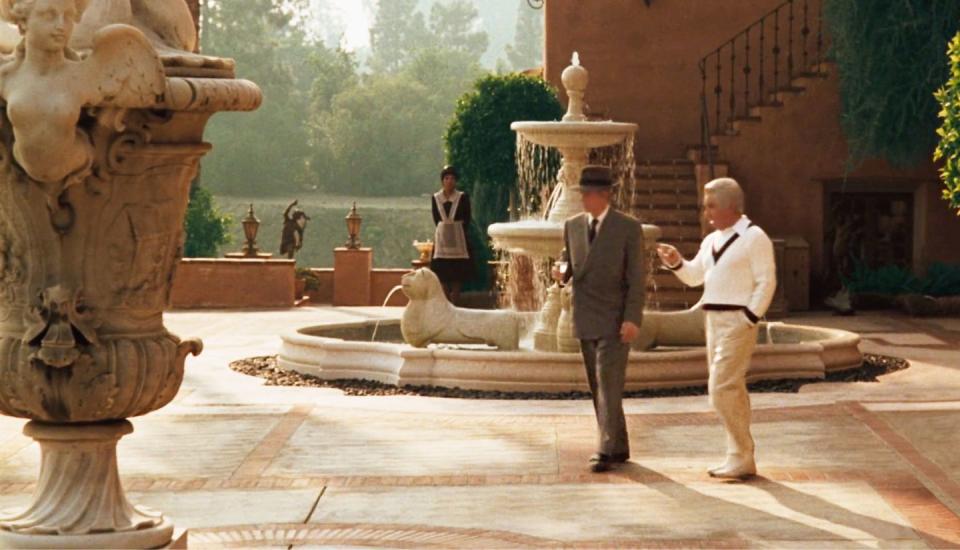
In 1976 businessman Leonard Ross bought the estate for $470,000, and he (along with the LLCs he created) used it as a line of credit for decades, at one point reportedly carrying a mortgage of more than $40 million. The juggling caught up with him in 2020, and, after listing the property for as much as $195 million, Ross was forced into bankruptcy and the estate was put up for auction. There were multiple bidders, but the last one standing, at $63 million, was Berggruen.
Ross raised two families in the house, and familial wear and tear took their toll. While Berggruen is planning to repaint the Mediterranean-style home in its original color, other restoration needs are slowly revealing themselves. David Silverman, founder of LA House Histories, who is writing a comprehensive book on the house, says, “Pulling back the baseboards revealed original tile. We still don’t know if the hand-painted murals created by Hugo Ballin will be found behind the mirrors that cover the dining room walls.”
For years Berggruen famously traveled the globe without a fixed residence. Los Angeles finally won him over thanks to what he calls “its infinite physical space and infinite mental space.” The soft-spoken Berggruen becomes animated when talking about California, calling it “the most productive state in the world.” He has purchased nearly 450 acres in the Santa Monica Mountains, where he plans to base his Berggruen Institute, a “think-action tank” that addresses long-term solutions to political and social challenges. He is also committed to restoring neighboring mountain ridges, to increasing access to hiking trails, and to implementing new fire prevention measures.
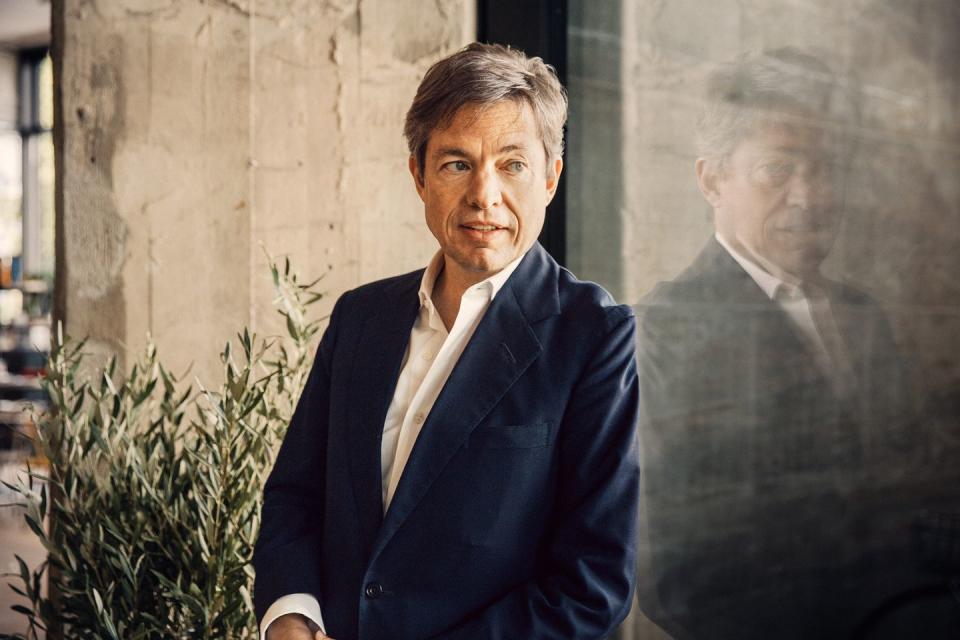
His sense of responsibility stands in contrast with other billionaires, such as the late Microsoft co-founder Paul Allen, who bulldozed the estate Wallace Neff created for screenwriter Frances Marion and silent film actor Fred Thomson on 120 acres in Beverly Hills. Allen said he planned to build a 50,000-square-foot home and a 50,000-square-foot amphitheater, but when he died in 2018 only a few roads had been added. Last year the place was sold to Alphabet’s Eric Schmidt for more than $60 million. Jeff Bezos originally put in an even larger bid, but he pulled out.
Several years ago Berggruen bought the Holmby Hills house Kaufmann designed for Edie Goetz, daughter of Louis B. Mayer, so one wonders if he has a particular pull toward the architect. “It’s more his sense of space and graceful proportion that attracts me,” says Berggruen, a LACMA board member who was raised in Paris by an actress mother and art dealer father and moved to the United States at 17 to attend New York University.
While Berggruen appreciates the significance of his new home’s previous occupants, it’s the building itself that seems most important to him. He becomes energized talking about restoring what he considers a masterpiece, and the enthusiasm may soon start spreading: He doesn’t plan to wait until the estate is fully restored to begin entertaining. Considering the famous friendships the home has fostered, why would he? “You create your own life,” he says, “through your actions.”
This story appears in the September 2022 issue of Town & Country. SUBSCRIBE NOW
You Might Also Like

